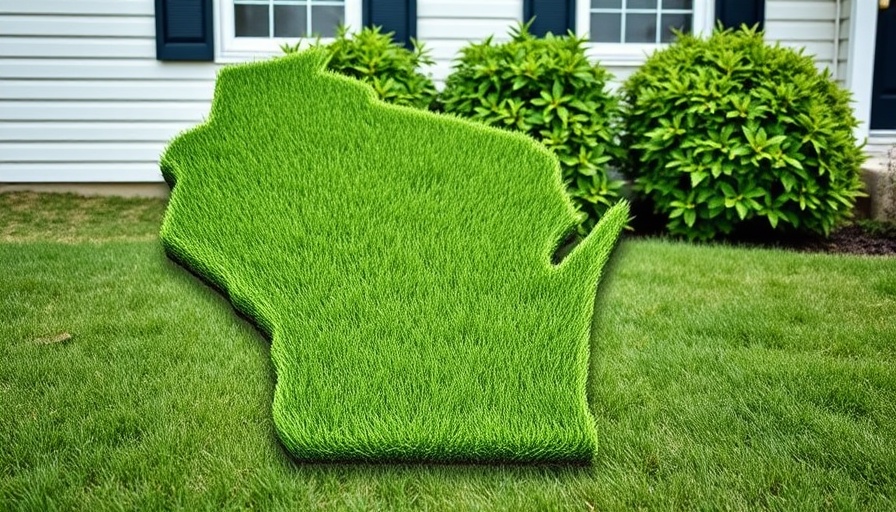
Why Early September is Key for Lawn Health
As autumn approaches, many homeowners in Wisconsin find themselves in a race against time to prepare their lawns for winter. Early September is heralded as an ideal moment to fertilize lawns, fostering lush growth that not only enhances aesthetic appeal but also reduces the likelihood of weed infestations and disease issues. This period is crucial for ensuring that your lawn is ready to withstand the fluctuations of seasonal change.
Understanding Nitrogen and Its Importance
Nitrogen plays a pivotal role in lawn care, serving as the primary nutrient responsible for vibrant green color and improved density. When selecting a fertilizer, homeowners should refer to the 'guaranteed analysis' section of the package for accurate information on its nitrogen content. Not all nitrogen sources are created equal; you should look for controlled-release options such as sulfur-coated urea or slow-release formats, which distribute nutrients gradually over time. Although these advanced fertilizers may come at a higher cost, the long-term benefits for lawn health are well worth the investment.
Applying the Right Amount of Fertilizer
Determining how much fertilizer to apply can be daunting. General recommendations suggest applying one pound of actual nitrogen per 1,000 square feet of lawn. For example, a fertilizer boasting 20 percent nitrogen would necessitate five pounds of product to achieve this target. Labels on fertilizer bags usually contain helpful guidelines about the coverage area, ensuring that homeowners can apply the right amounts for optimal results.
Avoiding Common Application Pitfalls
Applying fertilizer requires precision and care. It’s essential to ensure that your application is uniform and that no product lands on impervious surfaces, which could lead to nutrient runoff into storm drains and waterways. Research supports that turfgrass excels at retaining nutrients when fertilizers are applied directly to the lawn, effectively minimizing environmental impact.
Lawn Fertilization and Local Resources
For those looking for lawn care services nearby, several options are available in Muskegon. From lawn fertilization and weed control services to pest management, local companies provide tailored solutions to meet the unique needs of each lawn. Some of the popular products include "Turf Builder Lawn Food 30-0-3" and "Vigoro Lawn Fertilizer 29-0-4," which have garnered positive reviews for their effectiveness in promoting healthy lawn growth.
The Importance of Soil Testing
Wisconsin law restricts phosphorus use on established lawns unless soil tests indicate deficiencies. This emphasizes the need for homeowners to consider conducting regular soil tests to ascertain nutrient levels before applying fertilizers. This proactive approach not only adheres to legal guidelines but ensures that your lawn receives precisely what it needs to thrive.
Final Thoughts on Lawn Care
With the right approach and understanding of fertilization, homeowners can significantly enhance their lawn’s health this autumn. Investing in controlled-release fertilizers and adhering to recommended application practices can transform your outdoor space into a lush, inviting sanctuary. Remember that the time spent on lawn care today will pay off in vibrant greenery tomorrow.
If you’re looking to connect with local suppliers or companies specializing in lawn fertilization services in Muskegon, consider reaching out to explore options tailored for your lawn's specific needs. Keeping your property looking magnificent does not have to be a solo endeavor—local experts are available to lend a helping hand.
 Add Row
Add Row 
 Add
Add 


Write A Comment